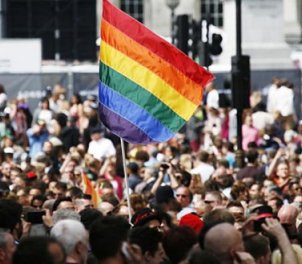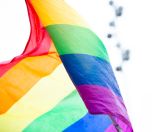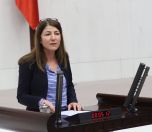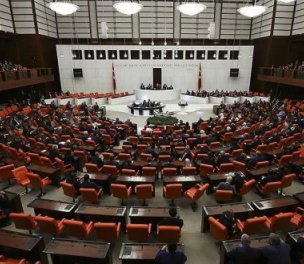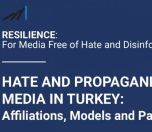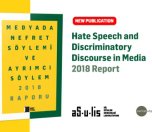Click to read the article in Turkish
Hrant Dink Foundation has published the Turkish version of its "Hate Speech and Discriminatory Discourse in Media 2019 Report". Prepared as part of the Media Watch on Hate Speech project, the report has shown that 4 thousand 364 articles and news stories targeted national, ethnic and religious groups in Turkey throughout last year.
108 of these articles and stories targeted more than one group and had hate speech items in different categories. It is seen that 5,515 hate speech items were used against 80 different groups in these texts.
Armenians and Syrians targeted the most
The report has shown that Armenians were the most frequently targeted group in the media last year. 803 hate speech items targeted them in 2019.
In news reports concerning the Khojaly massacre and April 24 Armenian Genocide Remembrance Day, Armenians were portrayed as enemies by being associated with violence and massacre.
They were also identified with terrorism in the news that mentioned them together with the Kurdistan Workers Party (PKK) and the Armenian Secret Army for the Liberation of Armenia (ASALA).
While Armenians were associated with violence as a community in accounts of "National Struggle", they were also defined as the power between "enemy" groups and individuals. In texts concerning Baku being taken over by Azerbaijan, Armenians were portrayed as enemies by being associated with violence and massare.
Last year, the second most frequently targeted group in Turkey's media was Syrians with 760 hate speech items. According to the report, Syrians were systematically coded as criminals with their names mentioned in the context of murder, theft and harassment incidents and they were identified with security problems and terror.
In news stories and articles regarding the "Operation Peace Branch" into Syria, they were targeted over their existence in Turkey. Syrians were also represented as the causes of current adverse economic conditions and unemployment. They were stigmatized as threats to Turkey's demographic structure and sources of unease and tension.
The third most frequently targeted group in Turkey's media was the Greek people last year. They were portrayed as "enemies" amid the escalating tensions with the country, especially in news regarding the drilling and gas exploration activities in the Eastern Mediterranean.
In news reports and articles about Cyprus, they were cited as a source of threat against the Cypriot Turks, together with Rums.
The Greek as a whole community was held responsible for the plight of refugees on the Turkey-Greece border.
The other most frequently targeted groups in 2019 were as follows: Jews (676 hate speech items), Rums (Greek) (603), Christians (604), English (223), French (140), Arabs (123), non-Muslims (98).
Distribution by types, newspapers, categories
According to the report, when the repeated content is excluded, 2,160 of the examined texts were column articles and 2,099 were news stories.
Press archive pages, files, writings on readers' pages, book reviews and similar other texts were categorized as "other" and hate speech items were identified in 105 different texts falling under this category.
51 percent of hate speech were produced in the local press while the remaining 49 percent was detected in the national press.
Last year, the first 15 national newspapers with the highest number of hate speech items were as follows: Yeni Akit (263), Yeniçağ (155), Diriliş Postası (131), Milli Gazete (123), Milat (118), Yeni Şafak (101), Türkiye (89), Sözcü (86), Türkgün (85), Star (72), Önce Vatan (68), Güneş (64), Doğru Haber (63), Ortadoğu (62), Yeni Mesaj (56)
The first 10 local newspaper with the highest number of hate speech items: Yeni Konya (88), İstiklal (46), Yeni Dönem (29), Bizim Anadolu Gazetesi (27) Ayrıntılı Haber (27) Karadeniz'den Günebakış (26), Bursa A Gazete(25), Eskişehir Sakarya (24), Erzurum Pusula (24), İttifak (23).
The report has analyzed hate speech items in four categories. Exaggeration/attribution/distortion ranked first with 71.80 percent. It was followed by a discourse of antagonism/war with 18.25 percent, by swear/insult/humiliation with 7 percent and symbolization with 2.95 percent.
Issues around which hate speech was more frequentIn January-April 2019: New year's celebration in Taksim, İstanbul; capsize of refugee boats in the Aegean Sea (January 16); France's declaration of April 24 as the Armenian Genocide Rememberance Day (February 6); the anniversary of Khojaly massacre (February 26); Women's Day (March 8); the US decision to recognize Israel's rule in the Golan Heights (March 25); racist attack against two mosques in New Zealand (March 15); local elections on March 21; Armenian Genocide Rememberance Day (April 24); In May-August 2019: Arrest warrant against foreign company executives working with the Turkish Petroleum Corporation (June 10); repeat İstanbul elections (June 24); the anniversary of 'Cyprus Peace Operation' (July 19); the anniversary of Srebrenitsa Massacre (July 11); the anniversary of July 15 coup attempt; the order of the Ministry of Interior to send Syrians to the provinces where they were registered; lawsuits filed in the US against Turkey to request damages for the property confiscated during the Armenian Genocide and its aftermath; August 30 Victory Day; In September-December 2019: Israel-Palestine conflicts; gas and oil exploration activities of Southern Cyprus and Greece in the Meditteranean; human rights violations suffered by refugees on the border with Greece; "Operation Peace Spring". |
* Click here for the full report in Turkish
(HA/SD)






